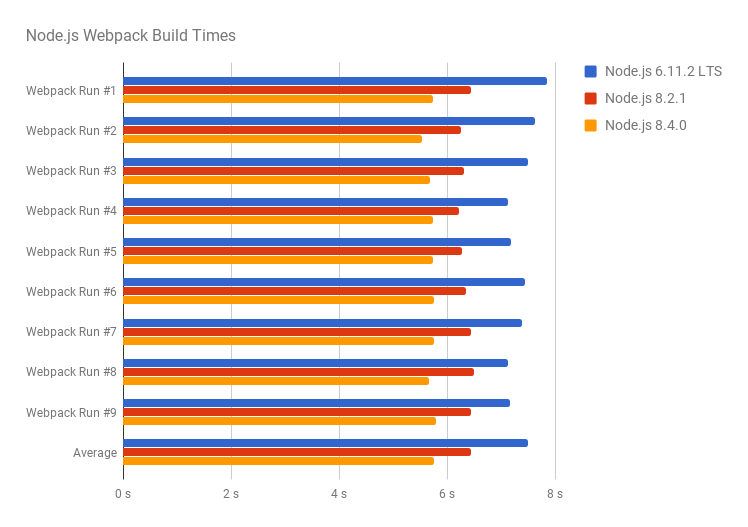Real-world Node.js Performance Improvements
I just updated from Node.js 8.2.1 to 8.4.0 within my current project. The update to V8 6.0 really shines as I noticed some major real-world performance improvements.
So I decided to do some tests with the above mentioned versions and the latest LTS version, 6.11.2.
Testing methodology
The Webpack build contains the following tasks:
- Building of two stylesheets with SASS and Autoprefixer
- Transpiling with Babel of a large AngularJS app written in ES2015
- Copying images and some other static files
- Chunking into
vendor.jsandapplication.js
Each test ran nine times for each Node.js version.
The tests were conducted in dev mode (no minification, no uglification) with a Debian-based Docker container on Windows 10 Pro with HyperV.
Hardware
- Core i7-7700K (the Docker container had access to all cores)
- 16 GB RAM (8 GB for the Docker container)
- PCIe SSD
As you can see, the system has more than enough power and is significantly faster than my MacBook. Docker on HyperV is incredibly fast and a joy to work with.
Results

The improvement between version 8.2.1 and 8.4.0 is a bummer. V8 6.0
does a great job. Node.js 6 used Crankshaft as JIT, Node 8.0 to 8.2 used a combinaton
of Crankshaft and Turbofan (V8 5.9). As of version 8.3.0 Node.js utilizes only Turbofan with
V8 6.0.
About 10% improvement with a minor version is a really big step and I’m really looking forward to the next V8 versions and even more power.